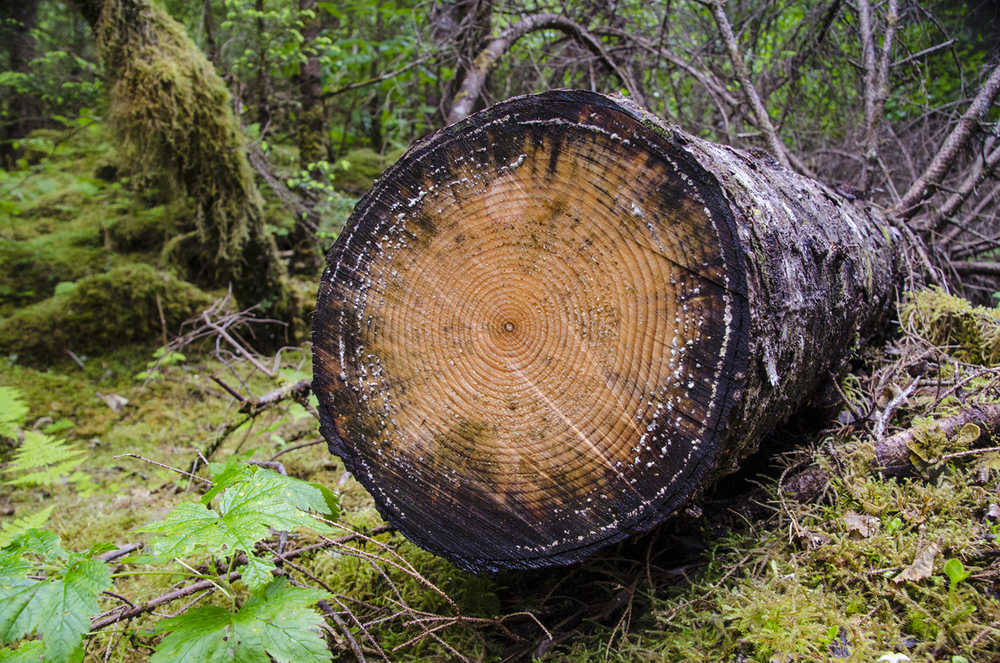The U.S. Forest Service has announced changes to its Tongass Forest Plan, which the agency hopes will alleviate conflicts between the timber industry, recreational users and conservation groups.
The amended plan calls for the transition from harvesting old growth trees to new growth over the next 15 years, more stable timber supplies for harvesting, further development of renewable energy projects and the improvement of fish and wildlife habitat.
“Through years of collaborative efforts, the Tongass has sought a resolution to long-standing conflicts regarding timber management,” said Earl Stewart, Tongass Forest Supervisor. “This amendment is the culmination of those collaborative efforts, and aligned with the unanimous recommendations of the Tongass Advisory Committee.”
The plan doesn’t include changes to the Tongass Conservation Strategy, wilderness designations or modifying the 2001 Roadless Rule. The Roadless Rule prohibits road construction on 58.5 million acres of roadless areas on National Forest System lands, of which the Tongass is a part.
According to one conservation group, the plan found the right balance.
“This plan amendment has the support of thousands of Alaskans that understand it’s far past time we move beyond the conflict and controversy of timber management on the Tongass and recognize the great value our largest national forest provides for fishing and tourism,” said Austin Williams of Trout Unlimited. “This is a huge step in the right direction for sustainable and economically-sensible management of the Tongass.”
But not all groups were happy with the amendments.
Dominick DellaSala with the GEOS Institute based in Ashlande, Oregon, says the 15-year transition from old to new growth forests “stalls urgent climate change protections.”
“On the heels of news last March that global carbon dioxide levels exceeded the 400 parts per million mark, old-growth forests on the Tongass, the nation’s most carbon dense forest, are being clearcut,” said DellaSala, chief scientist with the institute’s Forest Legacy Program, in a statement. “The Tongass absorbs about 8 percent of the nation’s carbon dioxide pollution annually — far greater than any other national forest.”
The amendments were recommended by the 15-member Tongass Advisory Committee, which includes residents from Alaska and the west coast, and representatives from Native corporations, state and local government, the timber industry and environmentalists.
The draft decision follows an extensive public process that included meetings throughout Southeast Alaska communities in early 2016. More than 165,000 comments were received on the plan’s Draft Environmental Impact Statement, according to a Forest Service news release
The publication of the draft decision and finalized EIS begins a 30-day public review period that starts Saturday. Also Saturday, a 60-day objection filing period will begin. Only those who submitted valid comments are eligible to object. Following review and written response to the objections, a final Record of Decision is expected in December.

